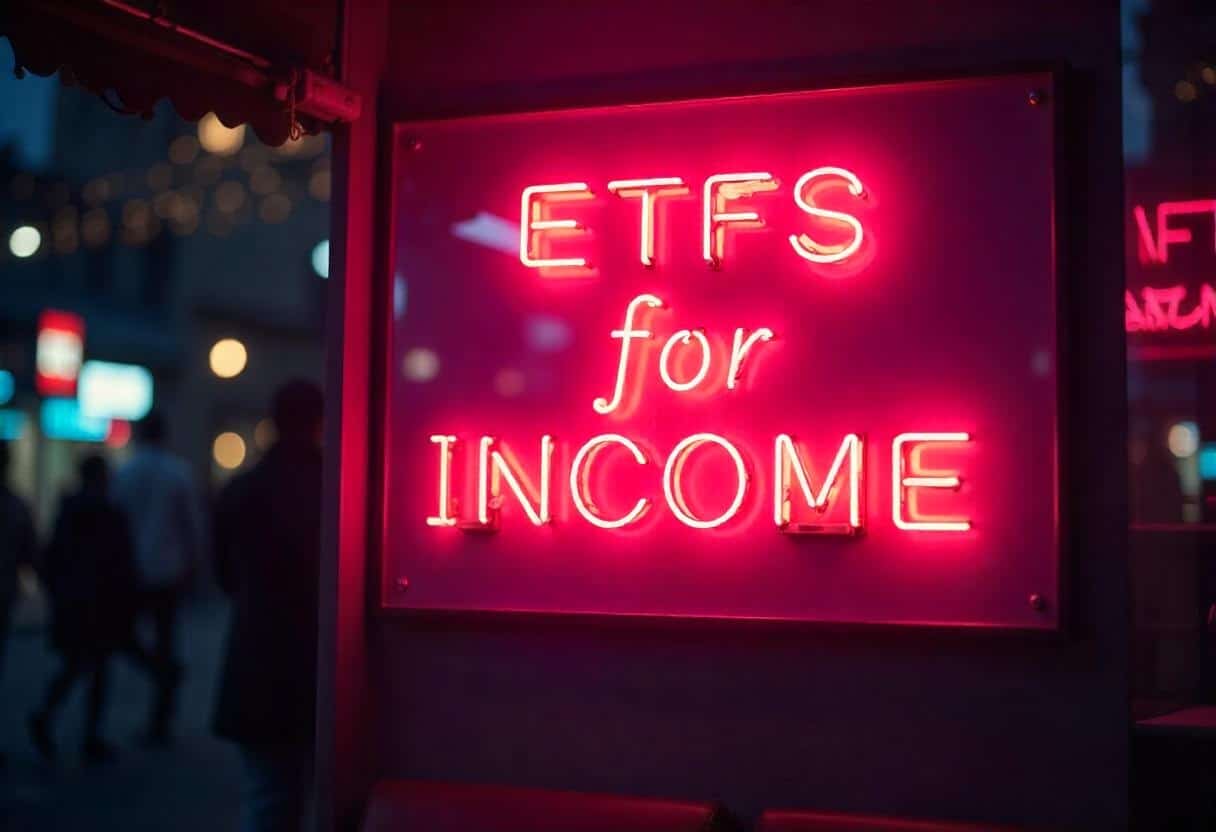Stocks climb after U.S.-Iran ceasefire. Find utility funds to keep your money paying in 2025.
Markets Get a Break
Big news hit on June 23, 2025. The U.S. and Iran agreed to a ceasefire. Stocks jumped—the S&P 500 rose 0.36% that day. Oil prices fell 6% to $70 a barrel. Investors, nervous after weeks of tension, finally relaxed. At SteadyIncomeInvestments.com, we focus on keeping your money steady, no matter what’s on the news. This article dives into utility funds—safe bets that pay you cash regularly. Markets up, oil down—ready to lock in steady cash? Let’s get started.
What’s Going On
The Ceasefire Story
On June 21, the U.S. bombed Iran’s nuclear sites, saying they were a threat. Oil shot up to $81.40 a barrel. Stocks took a hit—the S&P 500 dropped 3% since June 13. People worried about gas and grocery prices spiking. Then, on June 23, a ceasefire changed everything. Iran’s small attack on a U.S. base in Qatar was stopped cold. Oil fell to $70. Stocks bounced back, with the S&P 500 gaining 0.36% in a day.
This matters for your wallet. Cheaper oil means lower costs at the pump and store. Stocks are climbing, giving you breathing room. But hold up—things aren’t totally calm. Fed boss Jerome Powell speaks to Congress on June 24–25. If he hints at keeping interest rates high, markets could wobble again. Utility funds, like the XLU ETF, are your safety net. They pay you cash, no matter what the Fed or Iran does next.
Why Safe Funds Matter
Markets are like a wild ride sometimes. One day they’re up, the next they’re down. You want money that keeps coming, no matter what. Utility funds, or ETFs, hold stocks of companies that run electric, water, and gas services. People always need these, so the companies pay steady cash, called payouts. XLU, a top utility fund, pays 3.1%. It only fell 1% last week, while stocks dropped 3%. That’s a big deal—it’s like having a steady job in a shaky economy.
The ceasefire gives you three wins:
-
Happier Markets: Stocks are up, so it’s a great time to grab steady payers.
-
Cheaper Oil: Lower prices ease your budget.
-
Fed Watch: Powell’s talk could shake things, but utilities stay solid.
Utility funds keep your cash flowing, whatever comes next.
Why Utility Funds Are Awesome
What They Are
Utility funds hold stocks of companies like Duke Energy and NextEra Energy. These guys keep your lights on and water running. Their stocks don’t jump around much because people always pay their bills, even in tough times. XLU, the Utilities Select Sector SPDR ETF, pays 3.1%. That means $10,000 in XLU gives you $310 a year—enough for a phone bill or a few dinners out. Last week, when markets were rocky, XLU only dipped 1%. The ceasefire boosted stocks, but utilities stayed steady.
My friend Jake put $5,000 in XLU last year. He gets $155 a year in payouts, which he uses for streaming subscriptions. When stocks fell in June, he didn’t panic. His fund kept paying, like clockwork. That’s the kind of safety you want.
How to Use Utility Funds
Put 15% of your savings in utility funds. If you’ve got $100,000, that’s $15,000. XLU costs about $70 a share, with a tiny 0.09% fee—super cheap. Your $15,000 buys around 214 shares, paying $465 a year. If stocks keep climbing post-ceasefire, XLU might grow too. In 2022, when stocks crashed 18%, XLU only fell 5%. It’s like a sturdy house in a storm.
These funds balance your money. They don’t soar like tech stocks, but they don’t crash either. The ceasefire makes them a smart pick—stocks are up, but Iran could act up again, or Powell might keep rates high. XLU stays calm through it all. Plus, those payouts keep coming, letting you sleep easy.
Tips to Try
-
Pick a Solid Fund: Grab XLU or Vanguard’s VPU, which pays 3%.
-
Stick to 15%: Don’t go all-in; mix with other safe bets.
-
Use Your Payouts: Let that $465 buy more shares to grow your cash.
-
Keep an Eye Out: Powell’s talk might hint at high rates, but utilities handle it.
Adding More Safe Funds
Bond Funds for Extra Safety
Utility funds are great, but you can do more. Bond funds, like the iShares TIPS Bond ETF (TIP), pay 2.1% and grow if prices for stuff like food or gas go up. TIP stayed steady during the Iran drama. Put 10% of your savings in TIP—$10,000 if you’ve got $100,000. That’s $210 a year, plus protection if prices climb. Utilities and bonds together are like a double lock on your money.
Why Mix Them
Utilities are steady, but markets can surprise you. The ceasefire calmed things, but Iran might stir trouble again. Or Powell could say rates won’t drop, shaking stocks. Bond funds like TIP add another shield. They pay less than XLU but protect against rising prices. If the Fed keeps rates high, bonds hold their value. Mixing utilities and bonds makes your savings tough to crack.
Tips for Bond Funds
-
Grab TIP: Buy it for $105 a share, with a 0.19% fee.
-
Keep It at 10%: Pairs well with your 15% in XLU.
-
Watch Prices: If groceries get pricier, TIP’s value climbs.
-
Stay Ready: Sell some if bonds take up too much space.
Other Ways to Stay Safe
Adding Dividend Stocks
Want more cash? Try dividend stocks from utility companies like Duke Energy. It pays 3.8%—$380 a year on $10,000. Duke held strong during the Iran mess, falling less than most stocks. Put 5% of your savings, or $5,000 for $100,000, in Duke at $100 a share. That’s $190 a year, plus some growth if markets stay happy.
Tips for Dividend Stocks
-
Pick Strong Ones: Duke Energy or NextEra Energy pay well.
-
Keep It Small: 5% is enough to avoid big risks.
-
Use Payouts: Reinvest your $190 to buy more shares.
-
Check News: Ceasefire helps, but watch for Iran or Fed updates.
Your Money-Saving Plan
A Simple Setup
Here’s a plan for $100,000:
-
Utility Funds (15%): $15,000 in XLU for $465 a year in payouts.
-
Bond Funds (10%): $10,000 in TIP for $210 a year.
-
Dividend Stocks (5%): $5,000 in Duke Energy for $190 a year.
-
Cash or Other (70%): $70,000 to stay flexible or grab other deals.
This could pay $865 a year—enough for a new laptop or extra savings. It’s safe if markets dip or the Fed shakes things. The ceasefire lifted stocks, but utilities, bonds, and stocks keep your cash steady.
Watch Out
-
Utilities: If rates climb, XLU might dip a bit. Stick to 15%.
-
Bonds: TIP needs rising prices to shine. Mix with utilities.
-
Stocks: Duke could wobble if markets turn. Choose strong companies.
-
News: Iran’s next move or Powell’s words could stir markets.
Check your mix every year. Sell if one part gets too big to keep things balanced.
Can Your Cash Handle the Next Twist?
Picture stocks soaring, then Iran acts up again. Or Powell says rates are staying high. Will your money hold up? XLU pays 3.1% and stays steady. TIP gives 2.1% and fights price spikes. Duke adds 3.8%. Markets are up, oil’s down—ready to lock in steady cash? Start now to stay safe.
The Numbers
-
Stocks: S&P 500 up 0.36% on June 23.
-
Utilities: XLU down 1% last week, pays 3.1%.
-
Oil: Dropped 6% to $70 on June 23.
-
Bonds: TIP pays 2.1%, stayed steady.
-
Fed: Powell’s talk on June 24–25 could move markets.
These show why safe funds are key right now.
Digging Deeper: Why Utilities Work Long-Term
Utilities aren’t just safe for now—they’re built for the long haul. Companies like Duke and NextEra have paid payouts for decades. They’re regulated, so their profits are steady, even when markets crash. In 2008, when stocks fell 37%, utilities only dropped 10%. In 2020, during COVID, XLU held up while tech stocks wobbled. The ceasefire makes utilities even smarter—stocks are rising, but another crisis could hit.
Think about your goals. Maybe you’re saving for college, a house, or retirement. Utility funds give you cash to cover bills while your savings grow.
More Tips for Utilities
-
Look at History: Check XLU’s track record—steady payouts since 1998.
-
Spread Your Bets: Buy a mix of XLU and VPU for extra safety.
-
Think Long: Hold for 5–10 years to pile up payouts.
-
Talk to a Pro: A financial advisor can tweak your plan.
How Bonds Fit In
Bonds like TIP are your backup plan. They’re government-backed, so they’re super safe. If prices for stuff climb—like gas or food—TIP’s value grows. That’s perfect if the ceasefire falls apart or oil spikes again.
Bonds pay less than utilities but don’t swing as much. In 2022, when prices soared 9%, TIP gained 6% while regular bonds lost 13%. They’re like a steady friend who’s always there. Mix them with XLU for a plan that covers all bases.
More Tips for Bonds
-
Buy Easy: Use TreasuryDirect.gov for TIPS or grab TIP online.
-
Check Yields: TIP’s 2.1% is low but grows with prices.
-
Balance It: Keep bonds at 10% to pair with utilities.
-
Stay Updated: Watch for Fed rate news to plan sales.
Adding Context: The Bigger Picture
The ceasefire is great, but markets aren’t perfect. Iran could change its mind. Powell’s testimony might spook investors. Rates are at 4.38% for 10-year bonds, and some think they’ll stay high. Utilities and bonds don’t care much about rates—they keep paying.
Think about your life. Maybe you’re paying off a car or saving for a trip. These funds give you cash now and safety later. The ceasefire is a chance to set up your plan before the next big headline.
Tips for the Big Picture
-
Plan Your Needs: Figure out how much cash you need yearly.
-
Start Small: Try $1,000 in XLU to test it out.
-
Stay Calm: Markets move, but your funds keep paying.
Wrap-Up: Keep Your Cash Flowing
The U.S.-Iran ceasefire on June 23 lifted stocks and cut oil to $70. But markets could shake again. Powell’s talk might keep rates high. Utility funds like XLU pay 3.1% and stay steady. Bond funds like TIP pay 2.1% and fight price jumps. Duke stocks add 3.8%. Put 15% in XLU, 10% in TIP, 5% in Duke. Buy them today. Watch Fed news and check your mix yearly.

































